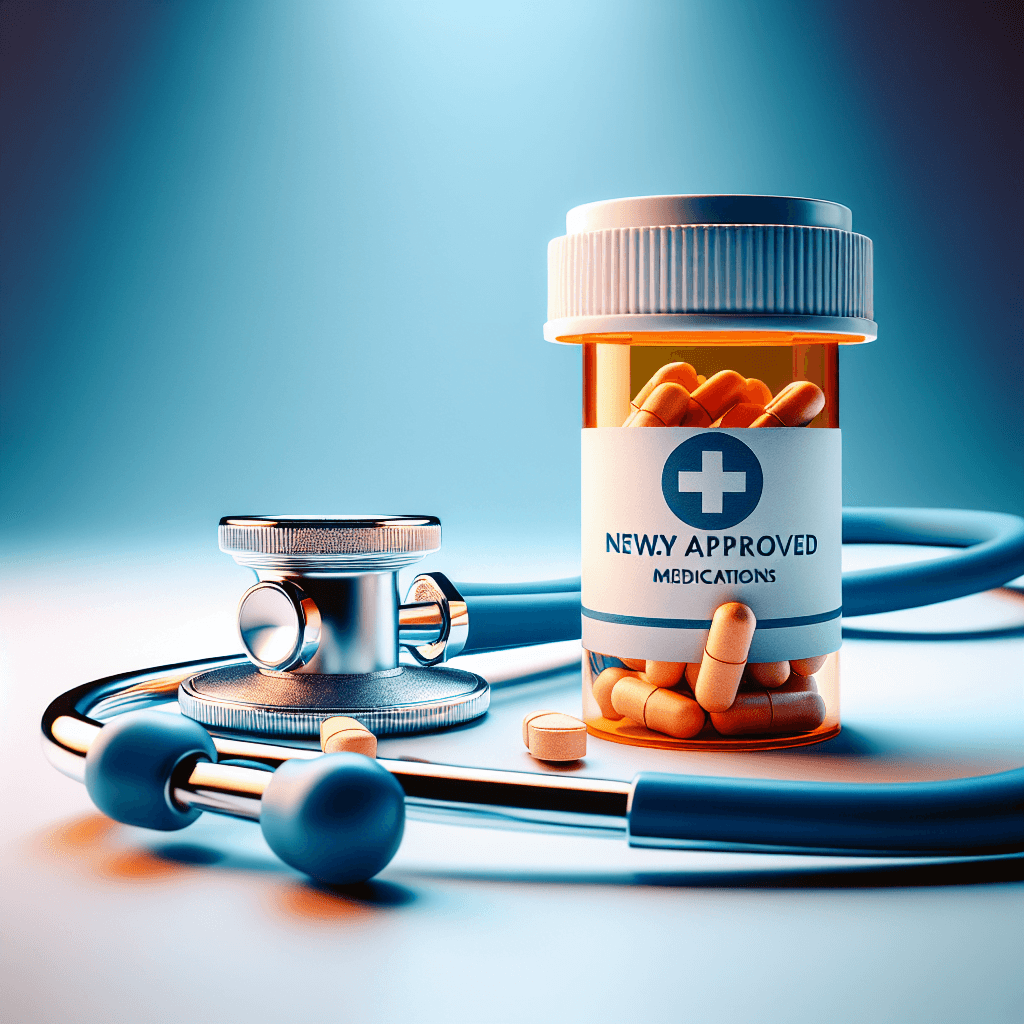In the fast-paced world of pharmaceuticals, keeping up with newly approved medications is crucial for healthcare professionals and patients alike. However, in order to make informed decisions about their usage, it is important to evaluate their safety thoroughly. This article provides a comprehensive guide on how to evaluate the safety of newly approved medications, offering key considerations, methodologies, and resources to ensure the well-being of patients in this ever-evolving landscape of medical advancements.
Table of Contents
How To Evaluate The Safety Of Newly Approved Medications
Understanding the Approval Process
The Role of the FDA
The approval process for medications in the United States is primarily overseen by the Food and Drug Administration (FDA). The FDA plays a crucial role in ensuring that the medications that become available on the market are safe and effective for use by the public. The agency evaluates the data provided by pharmaceutical companies during the drug development process to determine if a medication should be granted approval.
Clinical Trials
Clinical trials are an essential part of the drug approval process. These trials involve testing the medication in human subjects to assess its safety and efficacy. The pharmaceutical company is responsible for conducting these trials and collecting the relevant data. The FDA reviews the clinical trial data to evaluate the medication’s performance and assess its potential risks and benefits.
Post-Market Surveillance
Even after a medication has been approved and made available on the market, the FDA continues to monitor its safety through post-market surveillance. This involves collecting data on adverse events and other safety concerns that arise once the medication is used by a larger population. The FDA uses this information to further evaluate the medication’s safety profile and take appropriate actions if necessary, such as issuing warnings or recalls.
Assessing Pre-Clinical Data
Animal Studies
Before a medication can be tested in humans, pre-clinical studies are conducted using animal models. These studies provide important insights into the medication’s potential effects, including its toxicity, pharmacokinetics (how the drug is absorbed, distributed, metabolized, and eliminated), and pharmacodynamics (how the drug interacts with the body and produces its effects). The FDA reviews the results of these studies to determine if the medication can proceed to clinical trials.
Toxicity Studies
Toxicity studies are a crucial aspect of pre-clinical testing. These studies assess the potential adverse effects of a medication at various doses. They help to identify any safety concerns and establish the safe dosage range for human use. The FDA carefully examines the findings from these studies to assess the medication’s safety profile.
Pharmacokinetics
Understanding how a medication behaves in the body is essential for evaluating its safety. Pharmacokinetic studies provide information on how the medication is absorbed, distributed, metabolized, and eliminated. This data helps to determine the appropriate dosage and identify any potential interactions with other medications. The FDA examines the pharmacokinetic data to ensure the medication’s safety and effectiveness.
Pharmacodynamics
Pharmacodynamic studies investigate how the medication interacts with the body and produces its intended effects. These studies evaluate the relationship between the drug’s concentration and its physiological effects. Understanding the pharmacodynamics of a medication helps the FDA assess its safety, efficacy, and optimal dosing regimen.

Examining Clinical Trial Data
Study Design
The design of a clinical trial is of utmost importance when evaluating the safety of a newly approved medication. The FDA scrutinizes the trial design to ensure that it is well-structured, scientifically rigorous, and capable of generating reliable data. Factors such as the selection of patient populations, randomization, blinding, and the choice of comparators are carefully considered during the review process.
Patient Demographics
Examining the demographics of the patients involved in clinical trials is crucial for assessing the safety of a medication. The FDA pays close attention to ensure that the trial population properly represents the intended patient population. Knowledge of the age, gender, race, and underlying medical conditions of the study participants provides valuable insights into the medication’s safety and effectiveness for specific patient groups.
Sample Size
The sample size of a clinical trial directly influences the reliability of the study’s findings. The FDA evaluates the statistical power of the trial to ensure that it has an adequate number of participants to draw meaningful conclusions. Trials with larger sample sizes are generally more reliable in evaluating safety as they provide a better representation of the patient population and increase the ability to identify rare adverse events.
Control Group
Comparing the medication under investigation to a control group is essential for evaluating its safety. The control group receives either a placebo or an existing standard treatment for the condition being studied. This allows for a comparison of the medication’s safety profile to that of the control group, enabling the FDA to determine if the medication offers benefits that outweigh the potential risks.
Analyzing Adverse Events
Identifying Adverse Events
Adverse events refer to any undesirable effects that occur during the use of a medication. Identifying and analyzing adverse events is crucial in evaluating its safety profile. The FDA evaluates the data from clinical trials and post-market surveillance to identify and categorize adverse events associated with the medication. This includes considering the severity, frequency, and relationship to the medication in question.
Severity Assessment
Assessing the severity of adverse events is vital for understanding the potential risks associated with a medication. Adverse events range from mild to life-threatening, and the FDA carefully evaluates the severity of events reported during clinical trials and post-market surveillance. This information allows the FDA to determine the overall risk-benefit profile of the medication.
Expected vs Unexpected Events
During the evaluation of adverse events, distinguishing between expected and unexpected events is crucial. Expected events are those that can be reasonably predicted based on the medication’s known mechanism of action or previous experience with similar drugs. Unexpected events are those that are not anticipated based on the available data. The FDA carefully reviews and analyzes both expected and unexpected events to ensure a comprehensive understanding of the medication’s safety profile.
Data Sources
The FDA gathers adverse event data from various sources. These include reports from clinical trials, spontaneous reports from healthcare professionals and patients, and data from post-market surveillance systems. The agency reviews these sources to gain a comprehensive understanding of the medication’s safety profile and to identify any emerging safety concerns.

Assessing Benefit-Risk Ratio
Efficacy Data
In addition to evaluating safety, the FDA assesses the efficacy of a newly approved medication. Efficacy data from clinical trials provide information on how well the medication performs in treating the intended condition. The FDA analyzes the trial data to determine if the medication offers significant benefits that justify its potential risks.
Magnitude of Benefit
The magnitude of the medication’s benefit is carefully considered when evaluating its safety. The FDA evaluates the clinical trial data to assess the size of the treatment effect, taking into account factors such as the extent and duration of improvement in the patients’ condition. This information helps the FDA determine the overall benefit-risk ratio of the medication.
Potential Risks
Assessing the potential risks associated with a newly approved medication is essential. The FDA examines the adverse event data, pre-clinical findings, and other relevant information to identify any known or potential risks. Understanding the nature and severity of these risks is crucial for evaluating the safety profile of the medication.
Clinical Significance
Determining the clinical significance of the benefits and risks associated with a medication is an important part of the evaluation process. The FDA considers factors such as the impact on patients’ quality of life, the availability of alternative treatment options, and the severity of the condition being treated. This information guides the agency’s assessment of the medication’s benefit-risk ratio.
Monitoring Safety Signals
Identifying Potential Safety Concerns
Monitoring safety signals is crucial for identifying potential safety concerns associated with newly approved medications. The FDA employs various tools, including data mining techniques, to identify patterns or signals that may indicate an increased risk of adverse events. Close monitoring allows the FDA to take timely action to protect public health if a safety concern arises.
Risk Evaluation and Mitigation Strategies
When potential safety concerns are identified, the FDA may implement risk evaluation and mitigation strategies (REMS) to ensure the safe use of the medication. REMS can include additional monitoring requirements, restricted distribution programs, educational initiatives for healthcare providers, or other measures aimed at minimizing the risks associated with the medication.
Causality Assessment
Determining the causal relationship between a medication and an adverse event is a complex process. The FDA uses various methods, such as data analysis, expert opinion, and additional studies, to assess the causality of adverse events. This assessment helps to determine if the adverse event is attributable to the medication or is coincidental.

Considering Specific Populations
Pediatric Patients
Special considerations must be given to the safety of newly approved medications in pediatric patients. Children may respond differently to medications compared to adults, and their safety profile needs to be carefully evaluated. The FDA reviews pediatric study data and assesses the potential risks and benefits specific to this population to ensure appropriate use of the medication in children.
Elderly Patients
Elderly patients often have different physiological and metabolic characteristics, which can impact the safety and effectiveness of medications. The FDA considers the specific needs and vulnerabilities of the elderly population when evaluating the safety of newly approved medications. This includes evaluating data from relevant clinical studies and considering potential age-related risks.
Pregnant or Nursing Women
The safety of medications in pregnant or nursing women is of utmost importance. These populations require special consideration as medications can potentially harm the developing fetus or infant. The FDA evaluates data from pre-clinical studies, clinical trials, and post-market surveillance to assess the risks and benefits associated with the use of medications in pregnant or nursing women.
Reviewing Post-Market Safety Data
Pharmacovigilance Programs
Pharmacovigilance programs are an integral part of post-market surveillance. These programs aim to collect and evaluate data on adverse events and other safety concerns associated with medications. The FDA works closely with pharmaceutical companies, healthcare professionals, and other stakeholders to ensure the ongoing monitoring of the medication’s safety profile even after it has been approved.
Spontaneous Reporting Systems
Spontaneous reporting systems allow healthcare professionals and patients to voluntarily report any adverse events or safety concerns associated with a medication. These reports provide important real-world data that can help identify previously unrecognized safety issues. The FDA actively encourages the reporting of adverse events through such systems to bolster post-market safety surveillance.
Real-World Evidence
Real-world evidence refers to data collected from sources outside of traditional clinical trials, such as electronic health records, registries, and insurance claims databases. The FDA considers real-world evidence as a valuable source of information for evaluating the safety of newly approved medications. This data can provide insights into the medication’s safety profile in a broader patient population and over longer periods of time.

Utilizing Comparative Effectiveness Research
Comparing Different Medications
Comparative effectiveness research involves comparing different medications to determine which one offers the most benefits with the fewest risks. This type of research helps the FDA evaluate the safety of newly approved medications in the context of existing treatment options. Comparative effectiveness studies assess the relative efficacy and safety of medications and provide valuable data for making informed decisions.
Outcomes Research
Outcomes research evaluates the long-term effects of medications on patient outcomes, such as disease progression, quality of life, and overall survival rates. The FDA considers outcomes research data when assessing the safety of newly approved medications. This information helps to understand the medication’s impact on patient health and wellbeing beyond short-term clinical trial data.
Benefit-Risk Assessments
Comparative effectiveness research and outcomes research contribute to the overall benefit-risk assessments conducted by the FDA. These assessments weigh the potential benefits of a medication against its potential risks, taking into account factors such as efficacy, safety, patient preferences, and the availability of alternative treatments. The FDA utilizes this information to make recommendations and decisions regarding the approval and use of medications.
Conclusion and Recommendations
Continued Vigilance
The evaluation of the safety of newly approved medications is an ongoing process. It requires continued vigilance from both regulatory authorities like the FDA and healthcare professionals. Monitoring adverse events, conducting post-market surveillance, and engaging in continual research and evaluation are essential to ensuring patient safety.
Transparency and Accountability
Transparency and accountability are crucial throughout the drug approval process. The FDA strives to maintain transparency by sharing relevant information with the public, healthcare providers, and pharmaceutical companies. Open communication and accountability help build trust and ensure that medications are appropriately evaluated for safety and effectiveness.
Collaboration and Communication
Collaboration and communication among regulatory authorities, pharmaceutical companies, healthcare professionals, and patients are vital for effective medication safety evaluation. Sharing knowledge, data, and expertise enables a comprehensive understanding of the safety profile of newly approved medications and facilitates the implementation of necessary measures to protect patients’ health.
In conclusion, evaluating the safety of newly approved medications involves a rigorous and multifaceted process. The FDA plays a crucial role in reviewing pre-clinical data, clinical trial data, adverse events, and post-market safety data to assess the medication’s safety profile. Considering specific populations, monitoring safety signals, and utilizing comparative effectiveness research also contribute to a comprehensive evaluation. Continued vigilance, transparency, accountability, collaboration, and communication are key to ensuring the ongoing safety of medications and protecting patient health.

Related site – Our prescription for safe, effective, more affordable drugs

